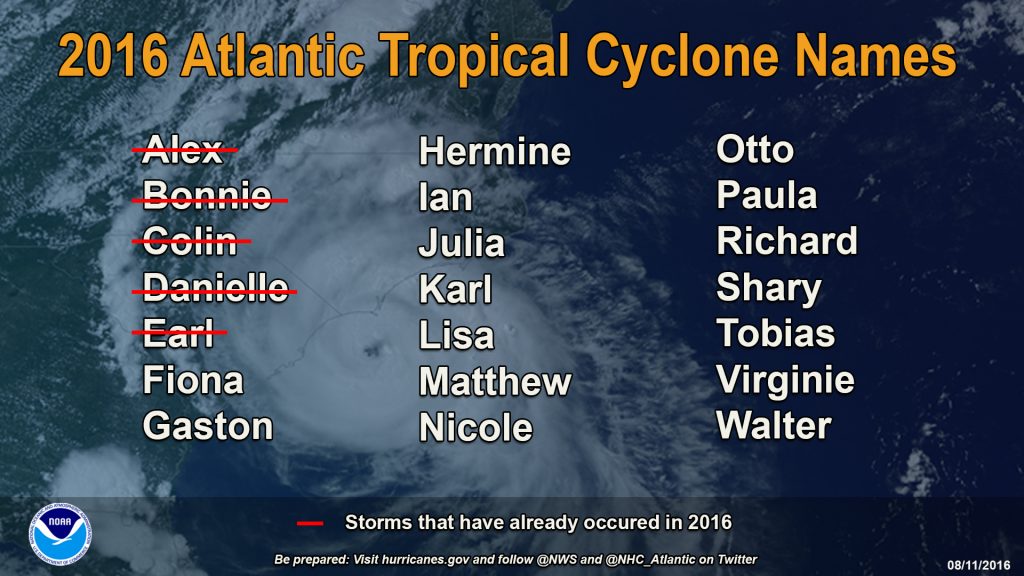In its updated 2016 Atlantic Hurricane Season Outlook, NOAA calls for a higher likelihood of a near-normal or above-normal season, and decreases the chance of a below-normal season to only 15 percent, from the initial outlook issued in May. The season is still expected to be the most active since 2012.
Forecasters now expect a 70-percent chance of 12–17 named storms, of which 5–8 are expected to become hurricanes, including 2–4 major hurricanes. The initial outlook called for 10–16 named storms, 4–8 hurricanes, and 1–4 major hurricanes. The seasonal averages are 12 named storms, 6 hurricanes and 3 major hurricanes.
“We’ve raised the numbers because some conditions now in place are indicative of a more active hurricane season, such as El Niño ending, weaker vertical wind shear and weaker trade winds over the central tropical Atlantic, and a stronger west African monsoon,” said Gerry Bell, Ph.D., lead seasonal hurricane forecaster at NOAA’s Climate Prediction Center. “However, less conducive ocean temperature patterns in both the Atlantic and eastern subtropical North Pacific, combined with stronger wind shear and sinking motion in the atmosphere over the Caribbean Sea, are expected to prevent the season from becoming extremely active.”
“Given these competing conditions, La Niña, if it develops, will most likely be weak and have little impact on the hurricane season,” added Bell. NOAA announced that La Niña is slightly favored to develop during the hurricane season.
To date, there have been five named storms, including two hurricanes (Alex and Earl). Four made landfall: Bonnie (in South Carolina), Colin (in western Florida), Danielle (in eastern Mexico), and Earl (in Belize and Mexico).

As we move into the peak of hurricane season, when hurricanes are most frequent and often at their strongest, NOAA urges coastal residents to make sure they have their hurricane preparedness plans in place and to monitor the latest forecasts. Learn how NOAA forecasts hurricanes.












